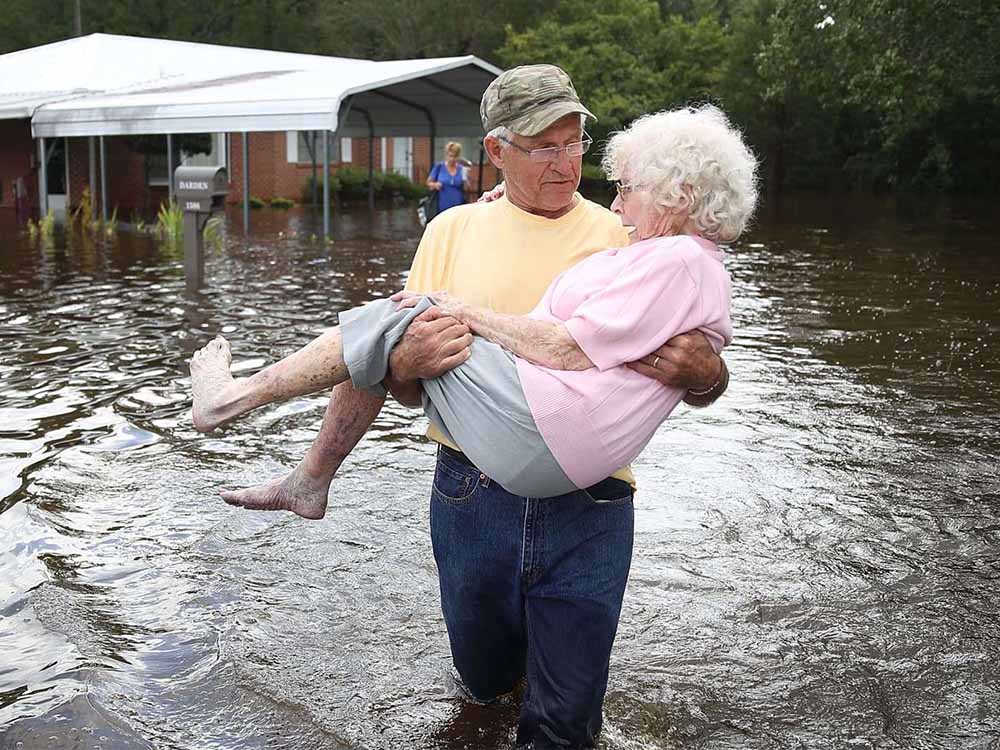Hurricane Florence of 2018: Devastation and Impact
In September 2018, Hurricane Florence emerged as a destructive force that deeply impacted the southeastern United States. This Category 4 hurricane originated from a tropical wave off Africa’s west coast, gradually intensifying due to favorable conditions. Its path was closely monitored as it headed towards the US coast.
On September 14, 2018, Hurricane Florence made landfall near Wrightsville Beach, North Carolina, as a Category 1 hurricane. While its wind speed had decreased, its threat persisted due to its slow movement and heavy rainfall. The slow pace led to prolonged torrential downpours, triggering widespread and catastrophic flooding.
The combination of storm surge and intense rainfall caused severe damage. Coastal areas experienced significant storm surges that flooded homes and infrastructure. Inland, relentless rain swelled rivers beyond their banks, submerging communities and making rescue efforts challenging.
Introduction to Hurricane Florence
In September 2018, Hurricane Florence, a powerful and catastrophic storm, left an indelible mark on the southeastern United States. As a Category 4 hurricane, Florence brought with it intense winds, heavy rainfall, and widespread flooding, resulting in significant damage to infrastructure, homes, and communities. This article delves into the details of Hurricane Florence’s formation, progression, impact, and the subsequent recovery efforts.
Human Toll and Evacuation Efforts
The impact of Hurricane Florence on human lives was profound. Tragically, dozens of people lost their lives due to the storm, either directly or indirectly. Evacuation efforts were hampered by the storm’s slow progression, making it challenging for residents to find safe shelter or leave high-risk areas in time. Search and rescue teams worked tirelessly to assist those stranded or in danger, often navigating treacherous conditions to reach those in need.
Response and Recovery
In the wake of Hurricane Florence, both federal and state agencies mobilized their resources to provide aid to the affected regions. The Federal Emergency Management Agency (FEMA) played a crucial role in coordinating disaster response and distributing assistance to impacted communities. Emergency shelters were set up to provide refuge for displaced residents, and medical teams were dispatched to provide care to those in need.
Communities came together to support one another, and volunteers from across the nation lent a helping hand. Organizations provided food, water, and essential supplies to those who had lost their homes. The recovery process was long and arduous, requiring extensive efforts to rebuild infrastructure, restore utilities, and help residents get back on their feet.
Conclusion
Hurricane Florence of 2018 was a stark reminder of the power and destructive potential of nature. Its slow movement, heavy rainfall, and resulting flooding inflicted significant damage on the southeastern United States, leaving communities reeling in its wake. The storm emphasized the need for improved disaster preparedness, response coordination, and climate resilience as communities worked together to rebuild and recover from the immense challenges posed by this catastrophic event.











